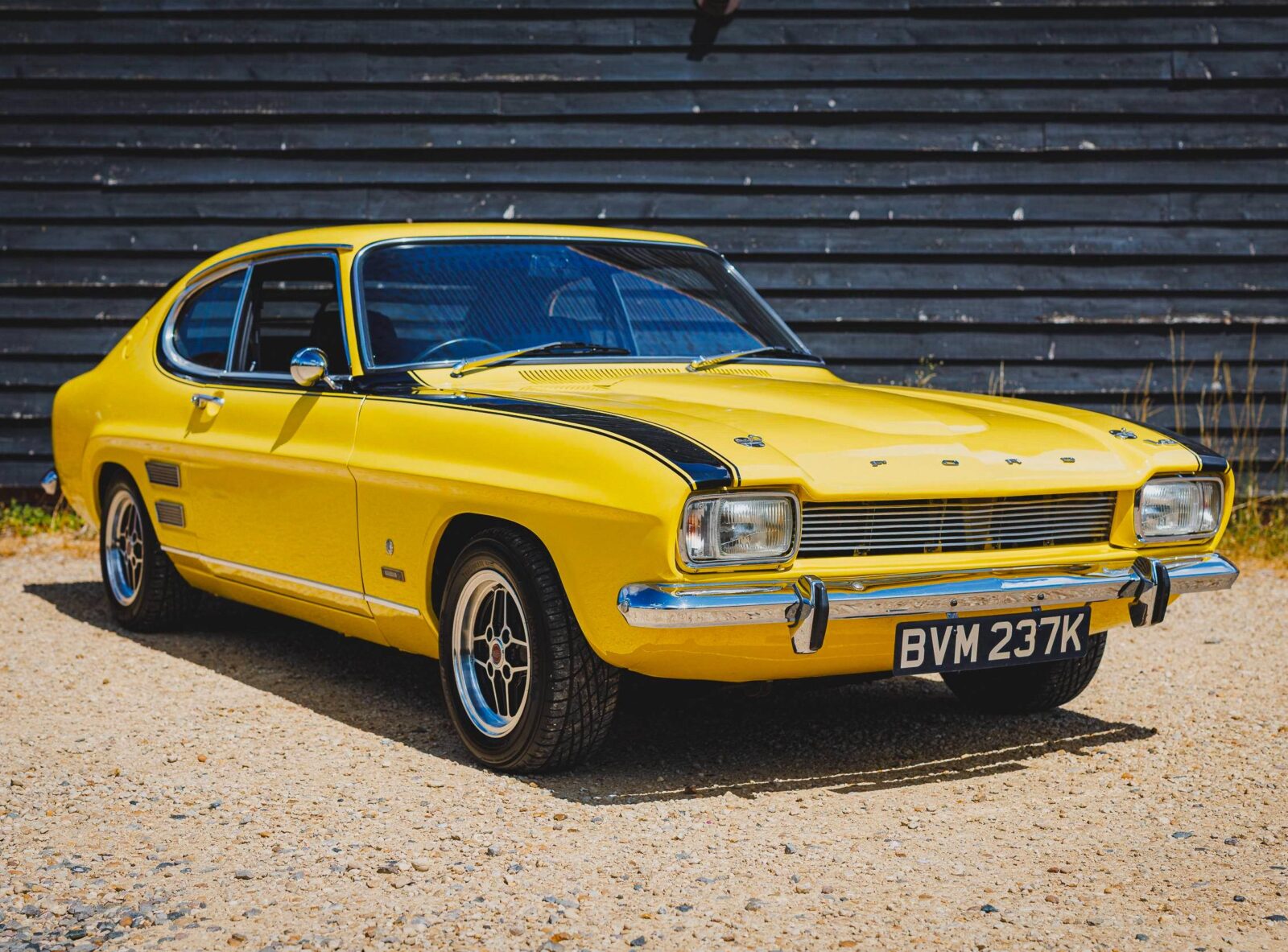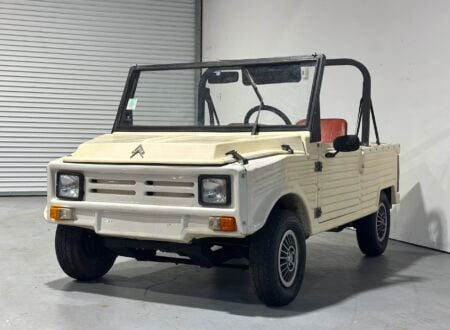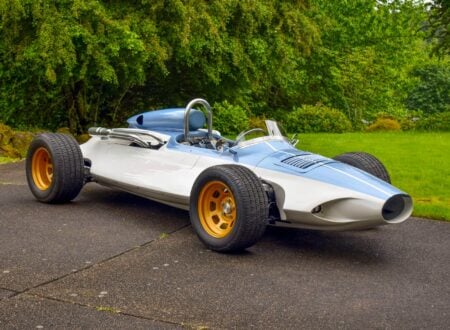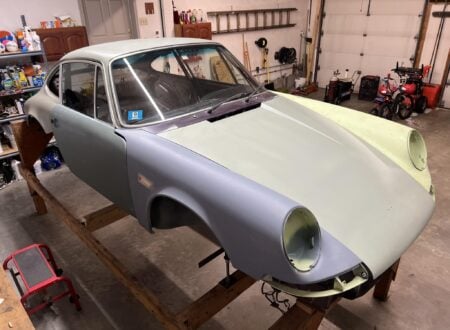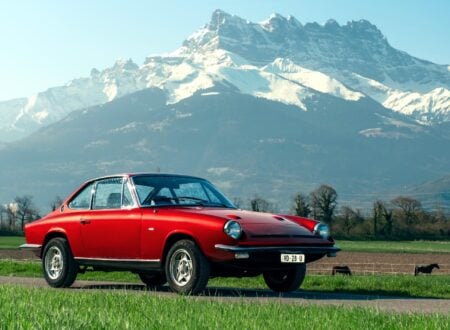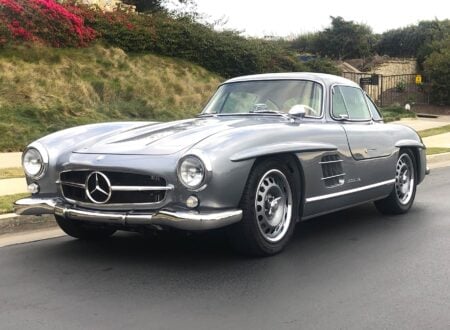The Ford Capri Perana V8 is a little-known V8-special that was produced in South Africa and sold through regular Ford dealerships. It was one of the fastest Fords of the time, with a feather-light curb weight and a stonking Ford 302 V8 under the hood.
When it was released, the Perana V8 would utterly dominate the South African motorsport scene, so much so they eventually changed the rules to exclude it. For homologation purposes 500 examples had to be made, and it’s believed that far fewer than that number have survived to the current day.
Fast Facts: The Ford Capri Perana V8
- The Ford Capri Perana V8 was a South African-built muscle car created by Basil Green, using a Ford 302 Windsor V8 in the compact Capri body. With 281 bhp and weighing just over 1,080 kg, it outperformed many period American muscle cars. It was sold through Ford dealerships and it was officially supported with warranties.
- Created for Group 5 racing, at least 500 examples were built to meet homologation rules, though only a fraction survive today. On track, the Perana was dominant, especially in the 1970-1971 South African Saloon Car Championship, where Bobby Olthoff won 13 of 14 races, prompting regulators to ban V8s entirely.
- Most Peranas had automatic transmissions, with some later converted to manuals. Trim and color options were limited, though some received Perana-specific paint. While largely unknown outside South Africa for decades, their rarity and performance have led to growing international collector interest in recent years.
- The featured yellow 1970 Capri Perana underwent a full restoration and later upgrades by Thornley Kelham in the UK. These included suspension and brake improvements, safety enhancements, and a dyno tune. It is now offered for sale via Bonhams with around 61,000 miles on the odometer.
History Speedrun: The Ford Capri Perana V8
The Ford Capri Perana V8 wasn’t born in Detroit, Cologne, or Dagenham – it was the product of the mind of a South African engineer named Basil Green, whose tuning shop outside Johannesburg quietly built the fastest Capris ever sold through official Ford dealers.
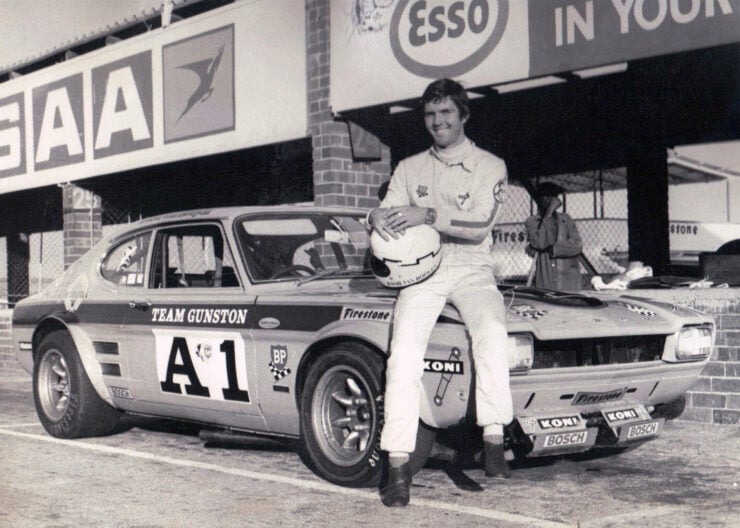

The Perana emerged during a volatile era of South African motorsport, when Group 5 saloon car racing became a battleground for manufacturer bragging rights. The Capri Perana stood out not because it was refined, but rather because it was brutally effective.
Basil Green founded Basil Green Motors in the 1960s, focusing initially on performance upgrades for Ford Cortinas and Escorts. His consistent race wins with these cars led to a growing reputation which soon led to formal ties with Ford South Africa, and eventually to full-fledged production of modified models that were sold with Ford badging and full warranty support.
The Perana name was drawn from the famously ferocious South American piranha fish, it soon came to represent South Africa’s own brand of muscle cars. The name was a deliberate misspelling, another company had already trademarked “Piranha,” but Basil Green wasn’t going to let this stop him, and he simply spelled it phonetically.
Before the Capri, Basil Green had already created the Cortina Perana V6 and the Escort Perana, but the Capri V8 was by far his biggest move. Ford had launched the Capri in Europe in 1969 as a “pony car for Europe,” a stylish and relatively affordable coupe aimed at young drivers as a parallel model to the Ford Mustang in the United States.
It was offered with a range of four and six-cylinder engines, initially topped out at 2.0 liters but this soon increased to 2.3 and then to 3.0 liters. Basil Green initially built 3.0 liter V6-powered Capris, but when Ford began offering the 3.0 liter V6 as a standard engine option, Green had to come up with something new.
He shoehorned a 302 cubic inch (5.0 liter) Windsor V8 into the Capri’s engine bay, matched it with a Borg-Warner limited-slip differential, and fitted uprated brakes, and suspension to better handle the power output.
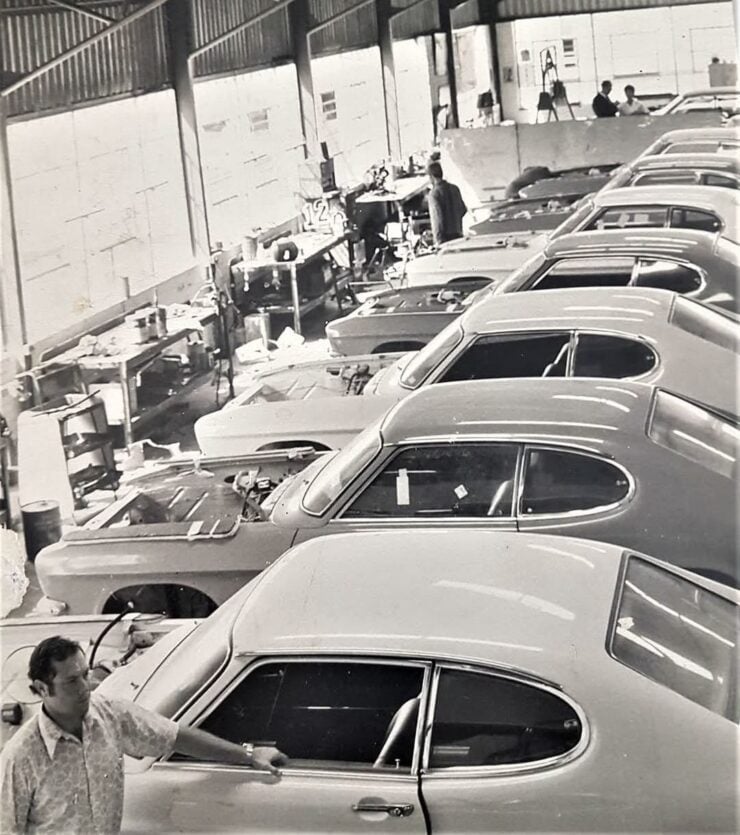

The result was a 1,085 kg (2,392 lb) coupe with 281 bhp, 300 lb ft of torque, and a brutal power-to-weight ratio – far beyond anything available in the regular Ford lineup. At this time in the early 1970s, the weight of American cars was climbing and the power outputs were generally declining, largely due to safety and emissions legislation.
By way of a direct comparison, the 1971 Ford Mustang with the 302 V8 produced 210 bhp, 296 lb ft of torque, and it weighed in at 3,560 lbs (1,615 kgs) – almost 1,200 lbs (~550 kgs) more than the Perana V8.
To homologate the car for Group 5 racing in South Africa, Basil Green had to build at least 500 units. These were sold through Ford dealerships under the Ford banner, making them factory-supported in every practical sense. Most used locally assembled Capri Mk1 bodies with imported Windsor engines, although late versions received upgrades like Mustang-spec radiators and lightweight alloy wheels to help with unsprung mass.
On the track, the Capri Perana V8 was essentially untouchable. It debuted in the 1970 South African Saloon Car Championship and dominated the field. The car was campaigned by Zakspeed in Europe but made its biggest mark at home.
In the 1970 – 1971 season, a Perana V8 driven by Bobby Olthoff won 13 of the 14 races and placed second in the remaining one, securing the championship in no uncertain terms. The car’s dominance was so absolute that rulemakers eventually changed the regulations to exclude V8s from competition.
The Capri Perana V8 became one of the most famous region-specific factory-approved hot rods in Ford’s history.
Beyond the racetrack, these cars rapidly gained underground fame and a reputation for being giant killers. South Africa didn’t get the full spread of American muscle models in the 1970s due to import restrictions, so the Perana filled a starved niche for V8 performance. Its low production numbers – estimated at between 400 and 500 examples – means that survivors are rare. Of those that have survived, even fewer retain their original engines and trim.
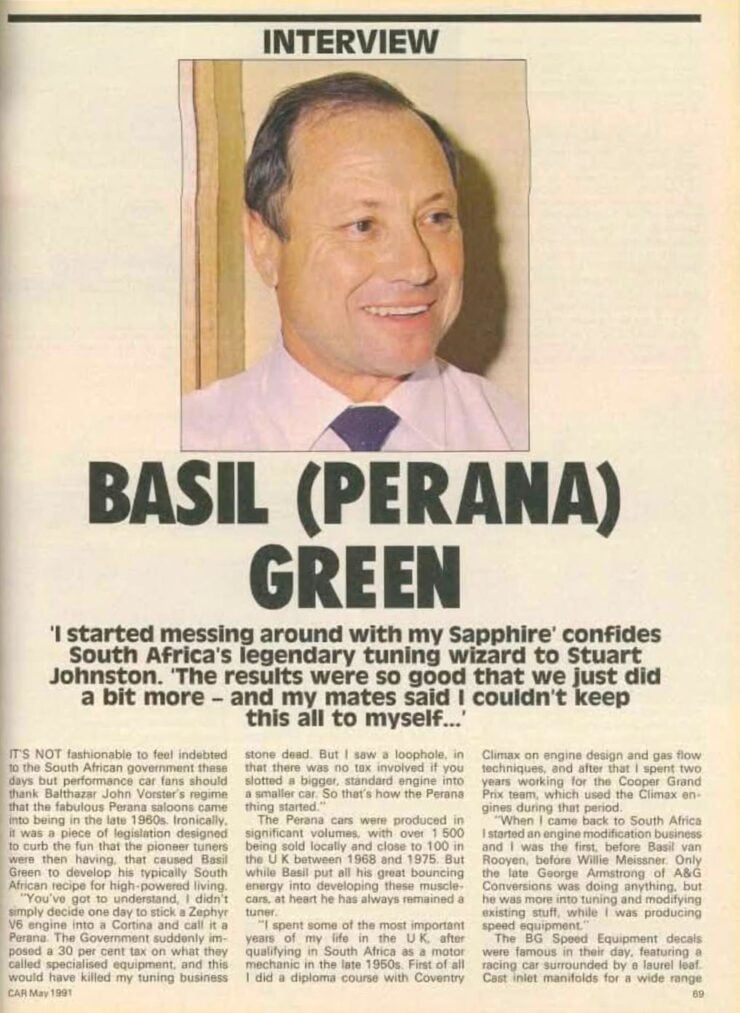

Most factory-built Peranas used automatic transmissions, which helped preserve the differential and eased the torque load on the rear axle. Some were later converted to manual by sporting-minded drivers. Paint options were limited, but Basil Green offered custom Perana-specific colors in a few cases.
The Capri Perana wasn’t exported in any significant numbers, and for decades it remained a curio known mainly among collectors and motorsport historians. That’s changing now, with increased recognition of regional homologation specials from the 1960s and 1970s, and the Perana’s performance figures still command respect.
Basil Green passed away in 2022 and he was honored by Ford South Africa. His legacy lives on in every Perana still on the road – the Capri Perana V8 wasn’t just a footnote in Ford history – it was a roaring, tire-smoking middle finger to anyone who underestimated what a little local know-how could do with the right car and a big enough V8.
The 1970 Ford Capri Perana V8 Shown Here
The car you see here is a yellow Ford Capri Perana V8 with black stripes over a black vinyl interior. It was bought from an owner in inland South Africa, away from the salt of the sea and its corrosive effects.
During the 2014 restoration any rust that was present was either repaired or the panel itself was replaced. It also received new springs and shock absorbers, an engine rebuild, and a list of other remediation work.
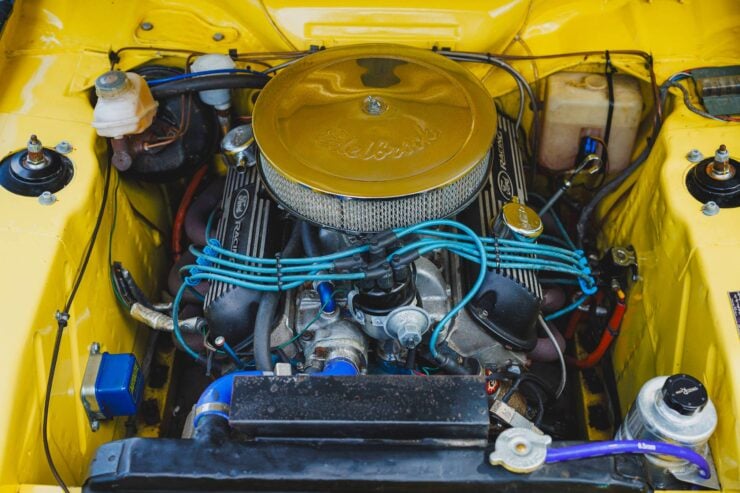

The current owner, and now seller, sent the car off to specialists Thornley Kelham of Cirencester in 2020 for a series of further improvements. These included a suspension upgrade, relocated steering rack mountings, a front brake upgrade, a wheel alignment (all four corners), relocated throttle linkages, a re-plumbed fuel system to make it more safe, a rolling road session for tuning, an exhaust upgrade, all new tires, and all new wheels.
The car is now being offered for sale out of the United Kingdom on Bonhams, with just over 61,000 miles on the odometer. If you’d like to read more about it or place a bid you can visit the listing here.
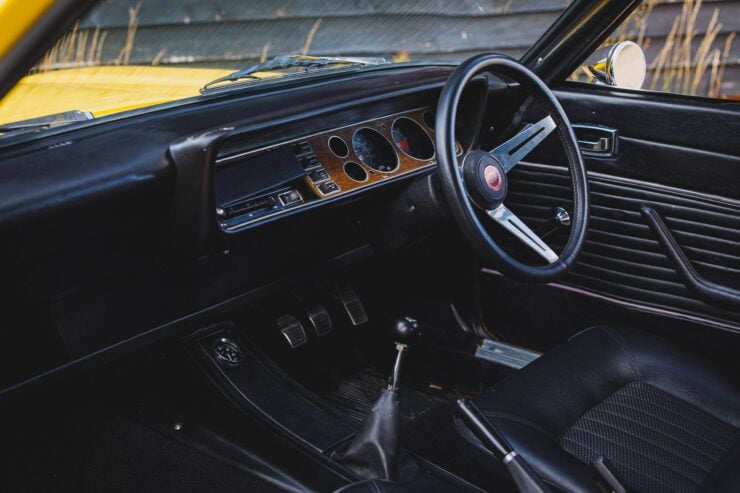
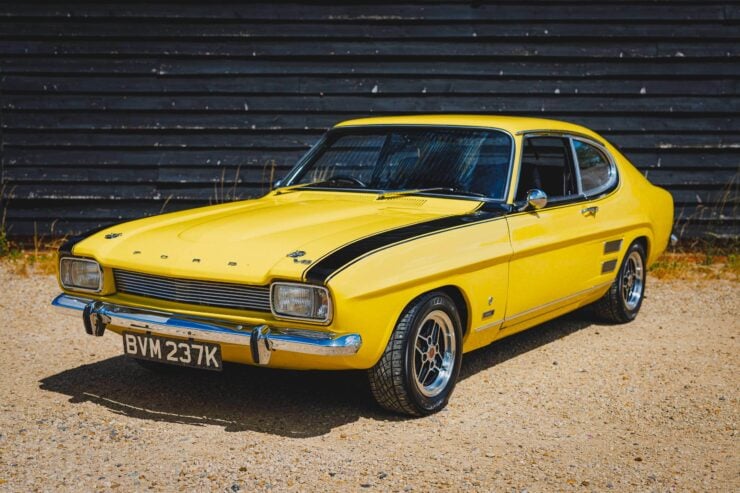
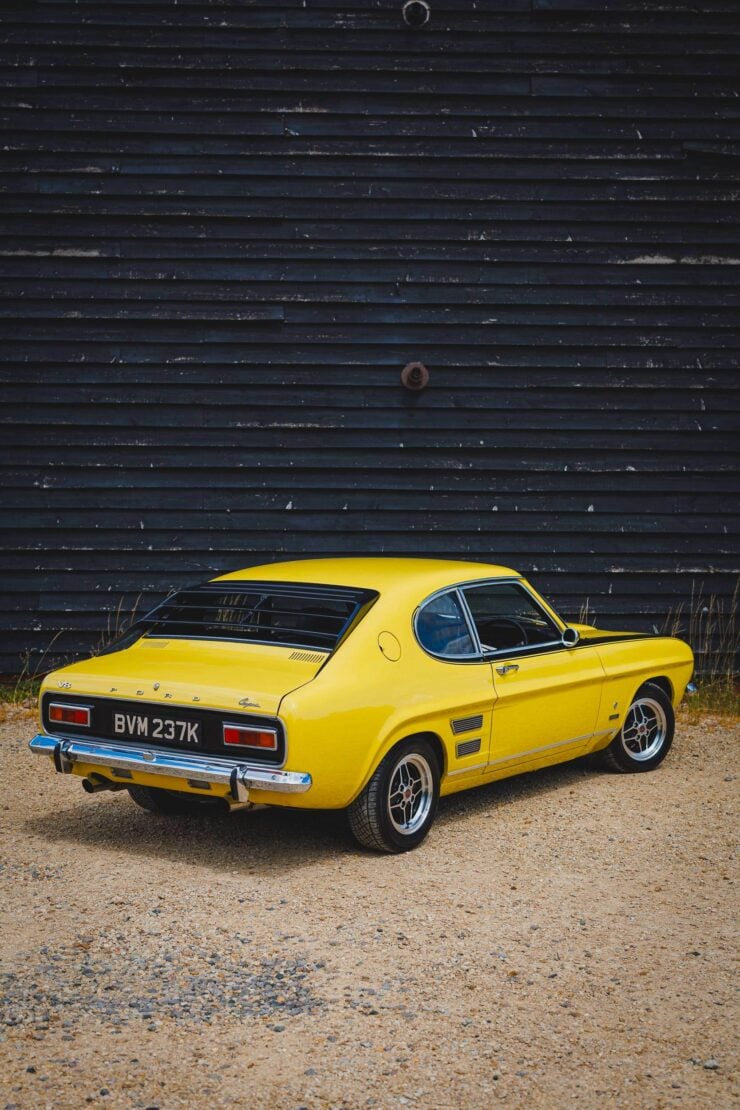
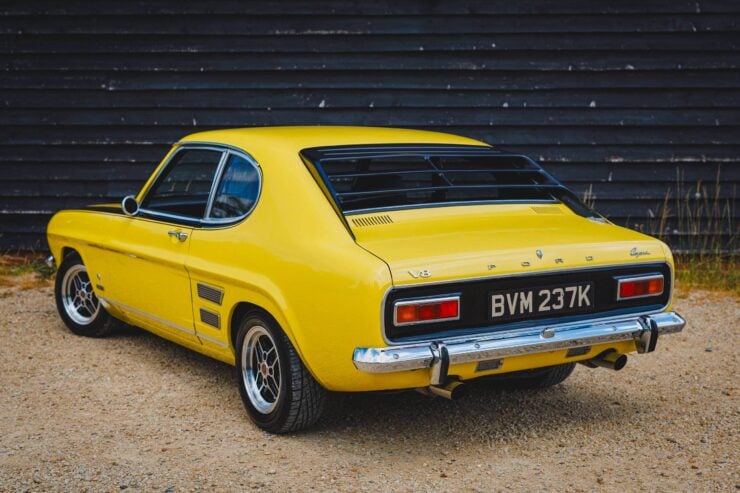
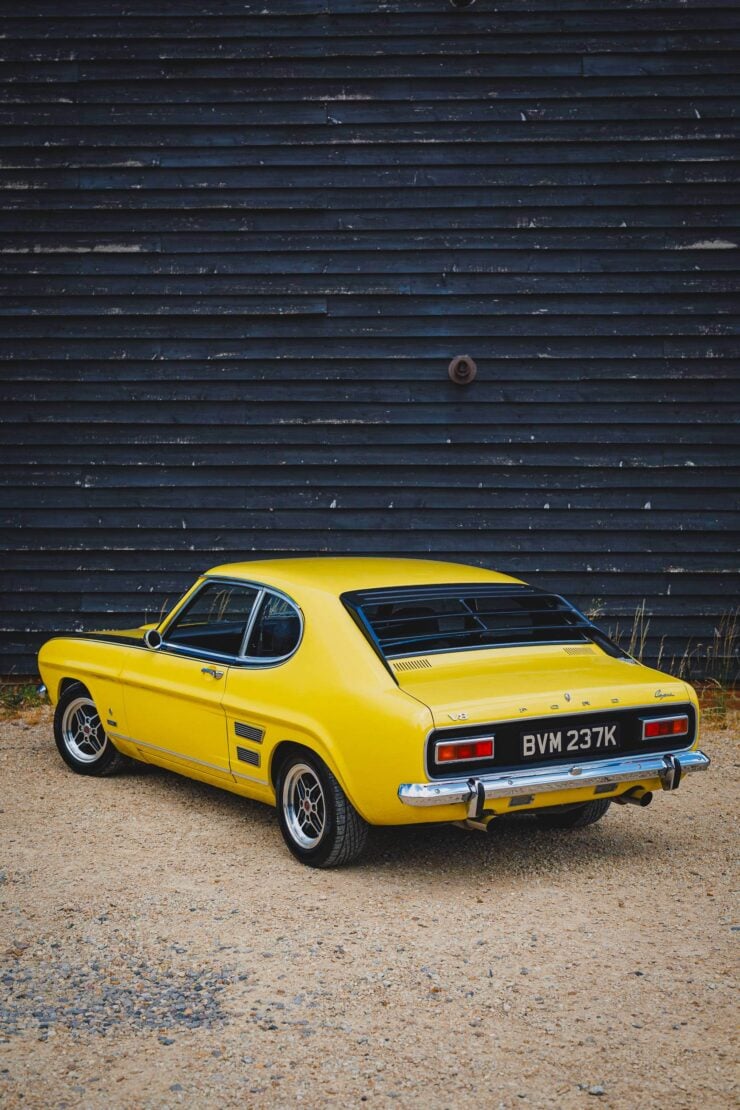

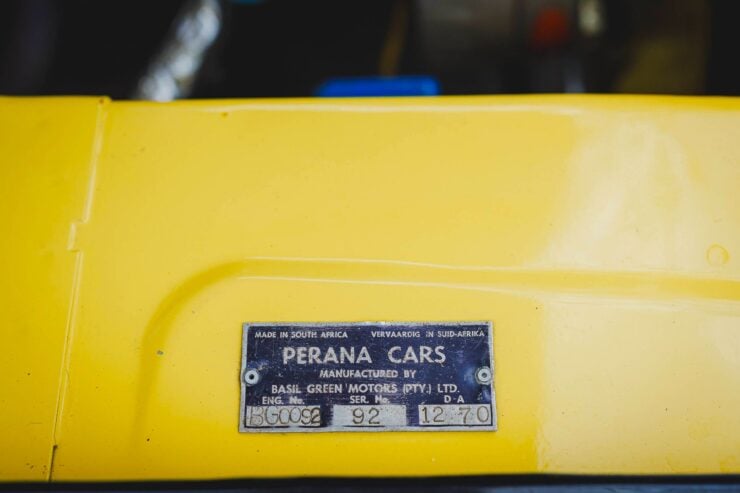
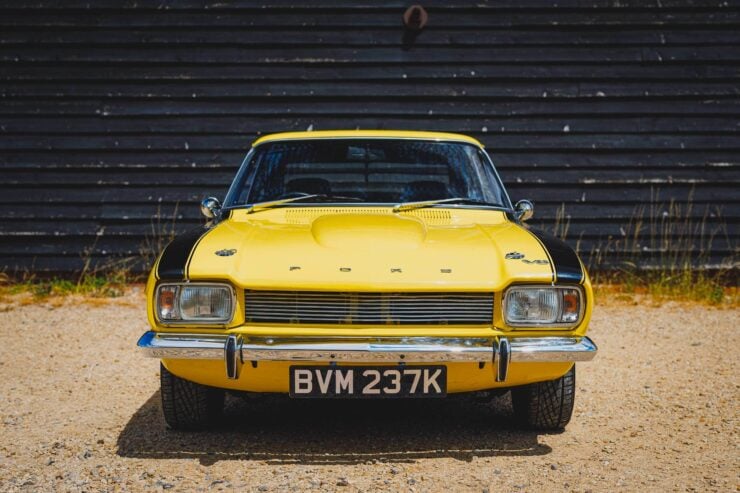
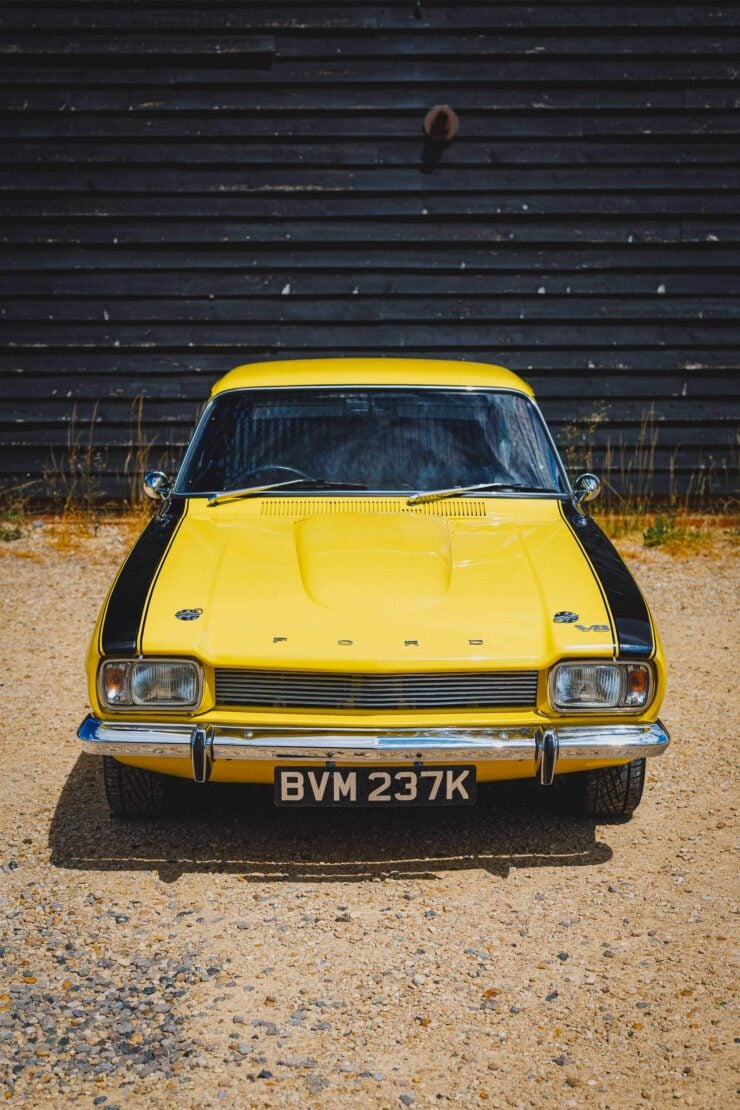
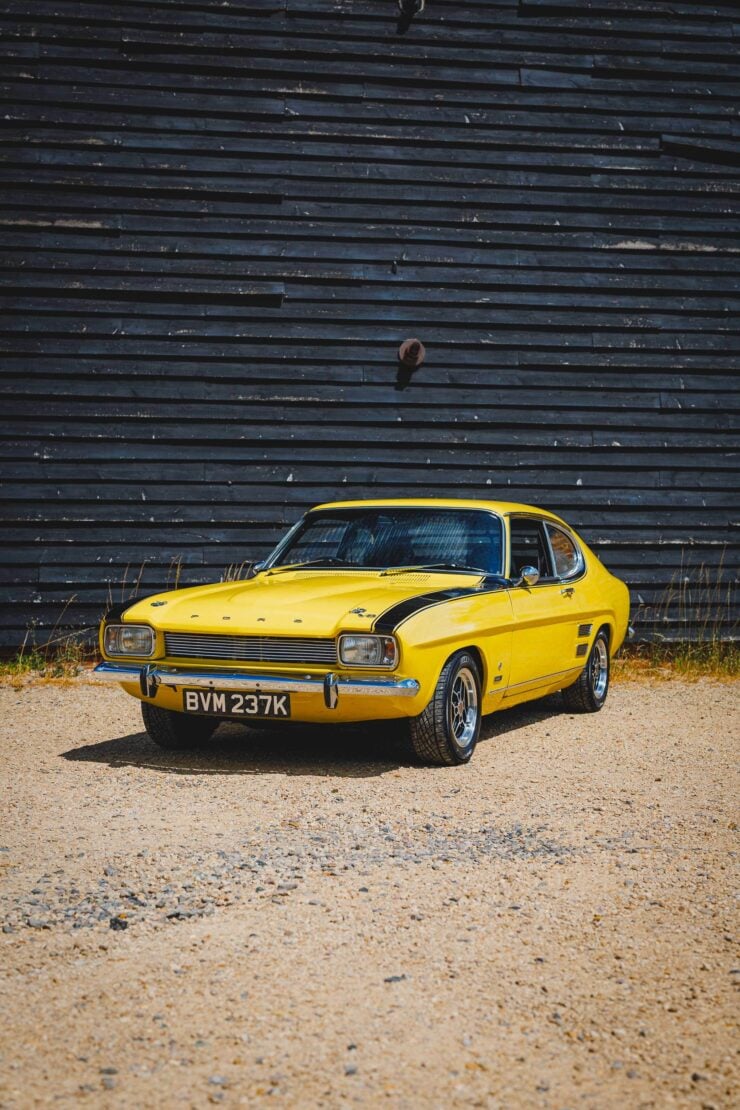
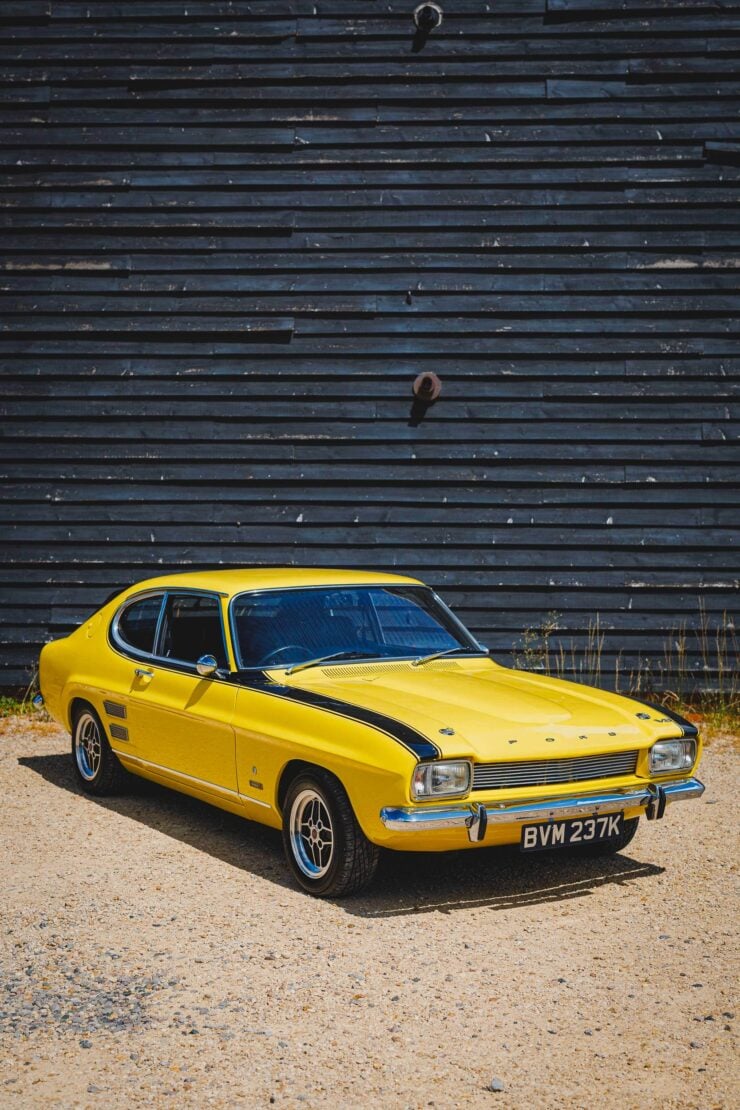
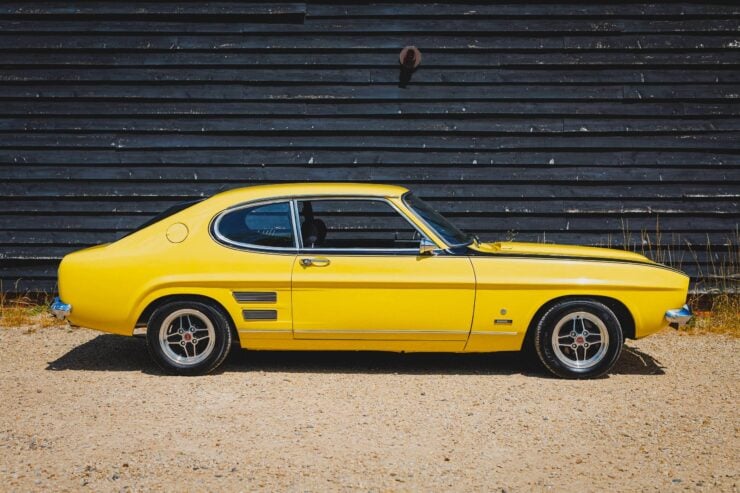


Images courtesy of Bonhams

